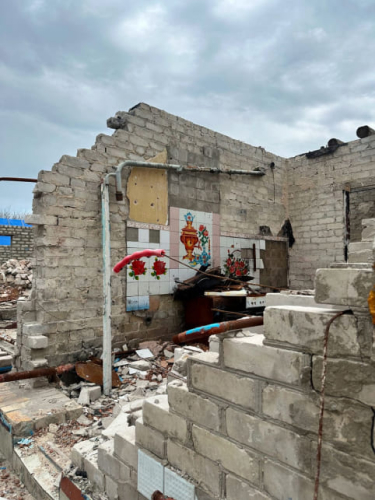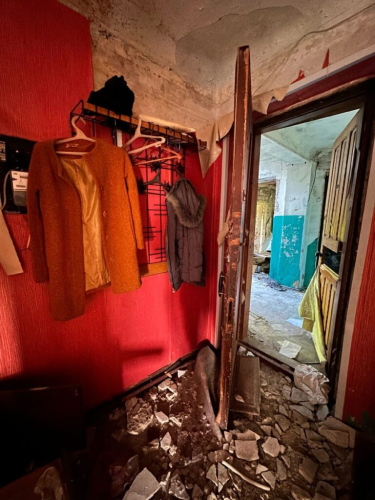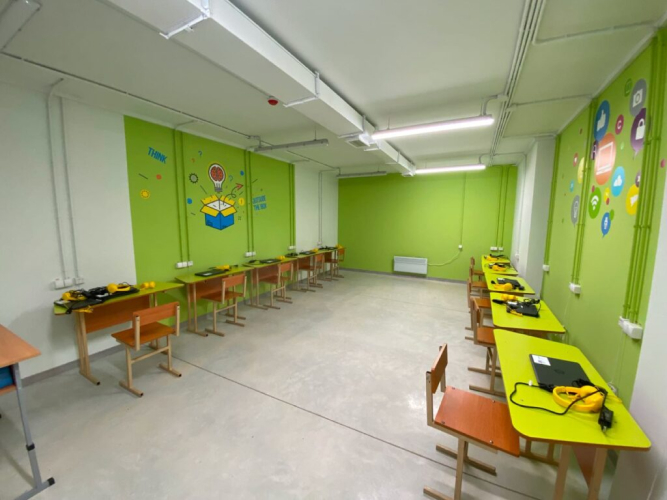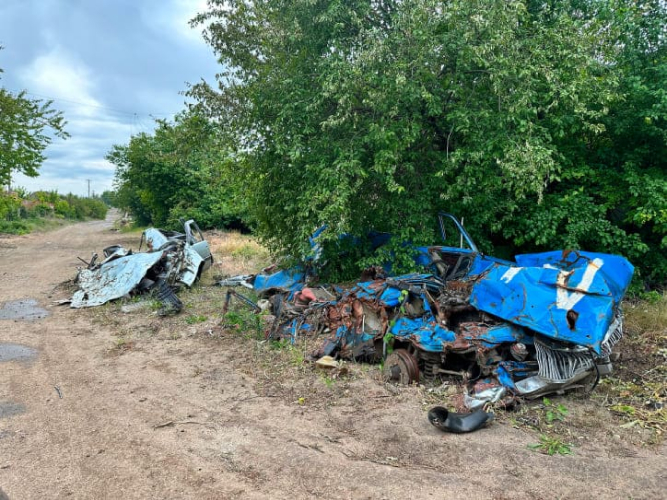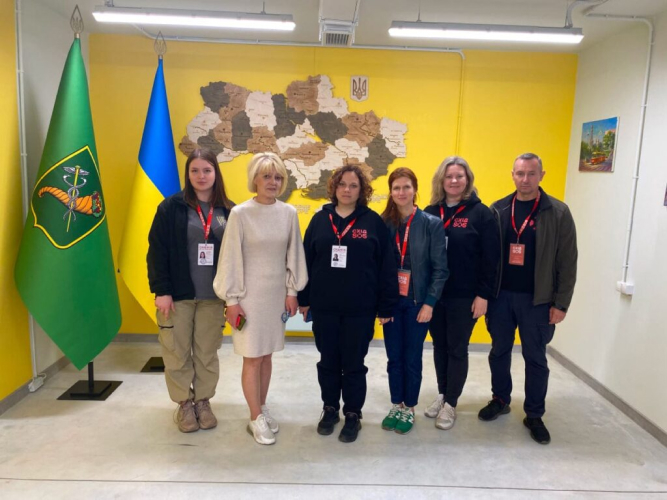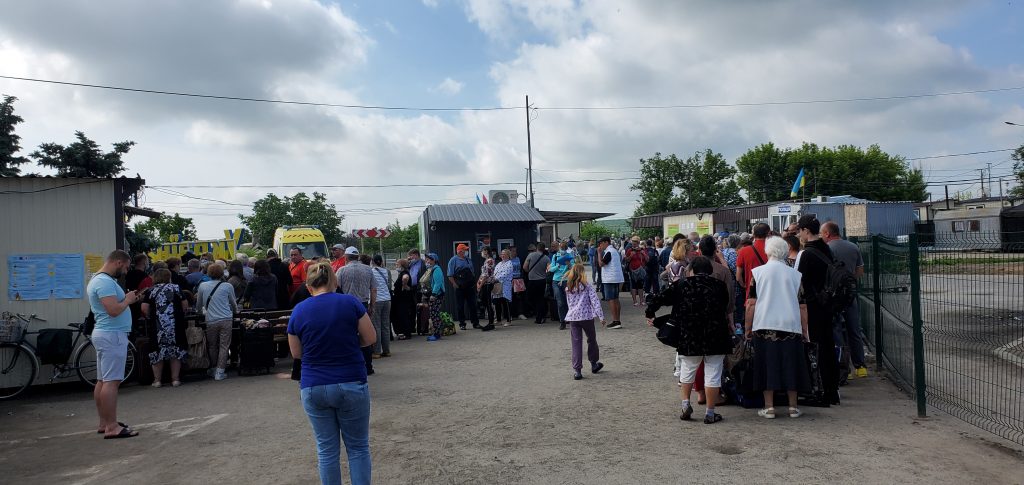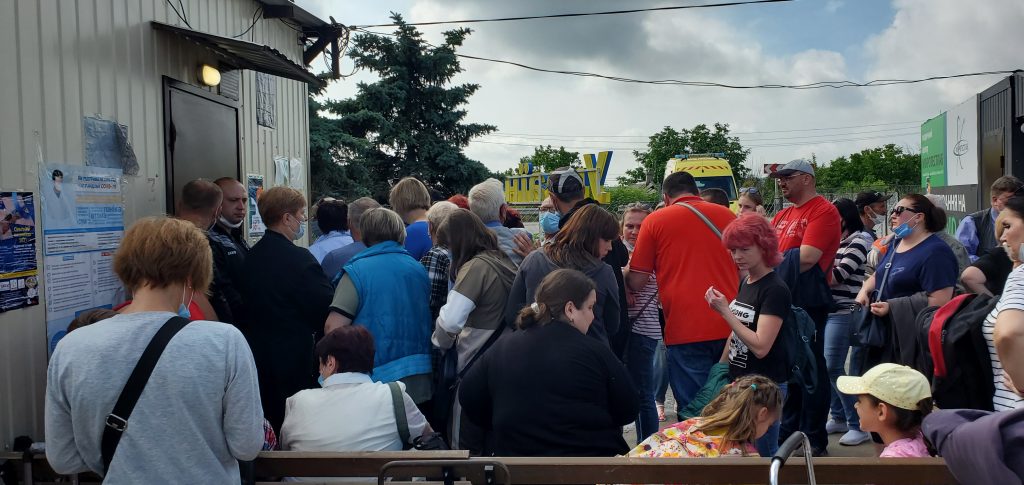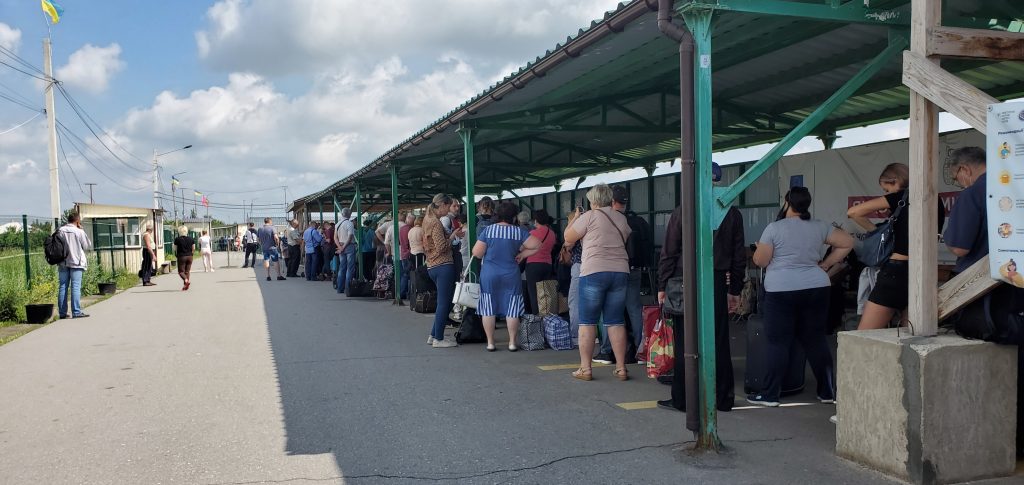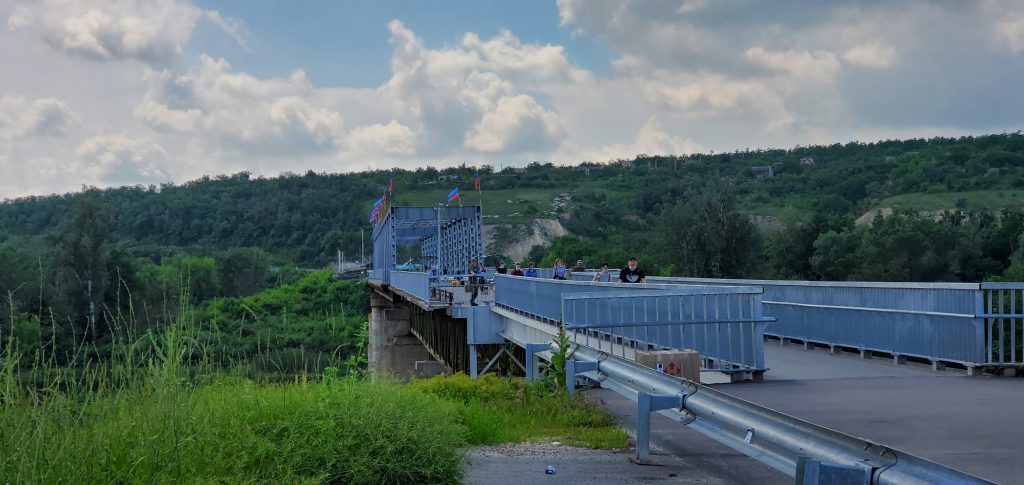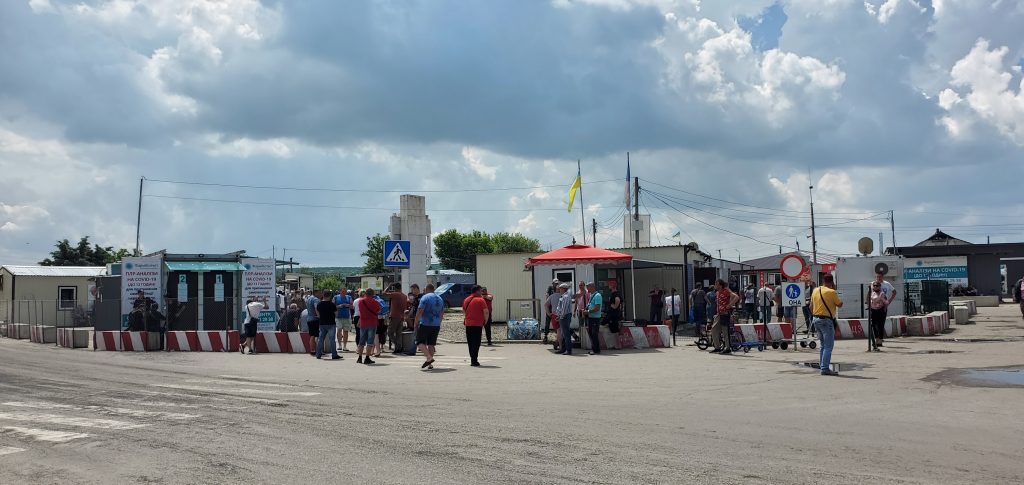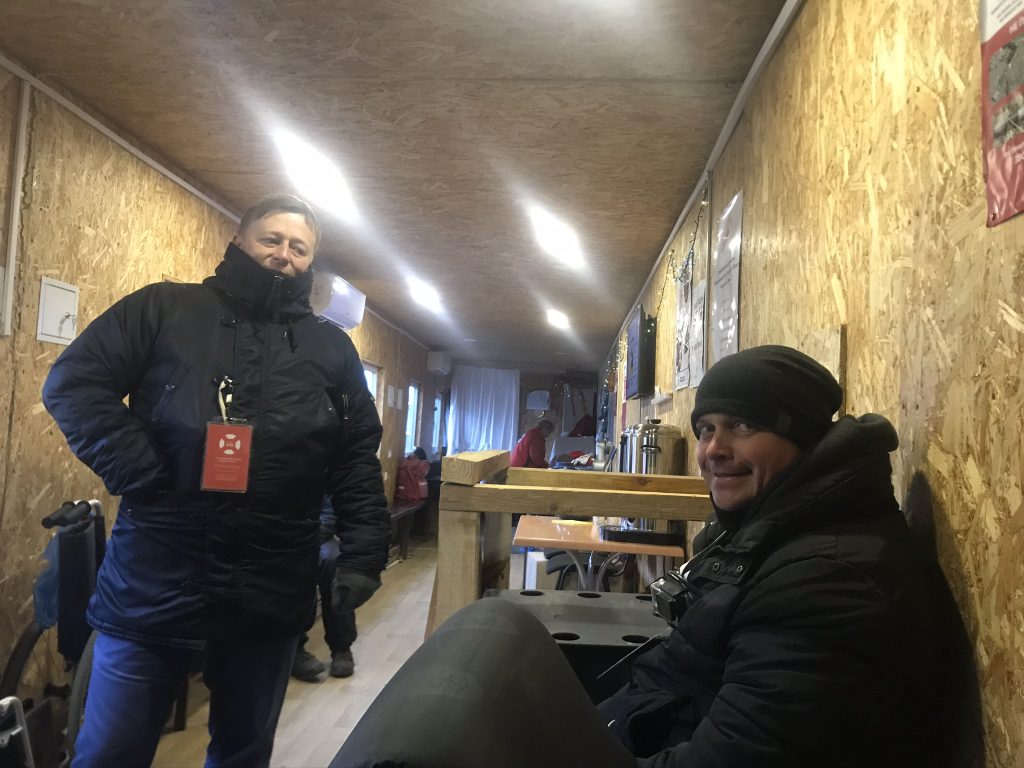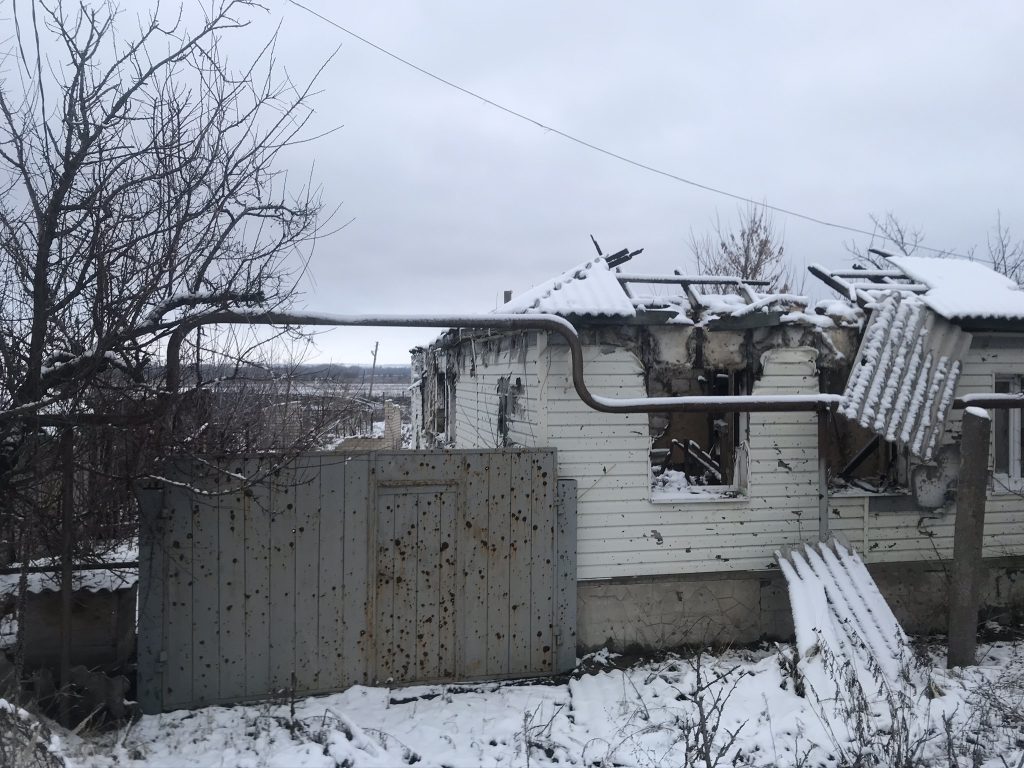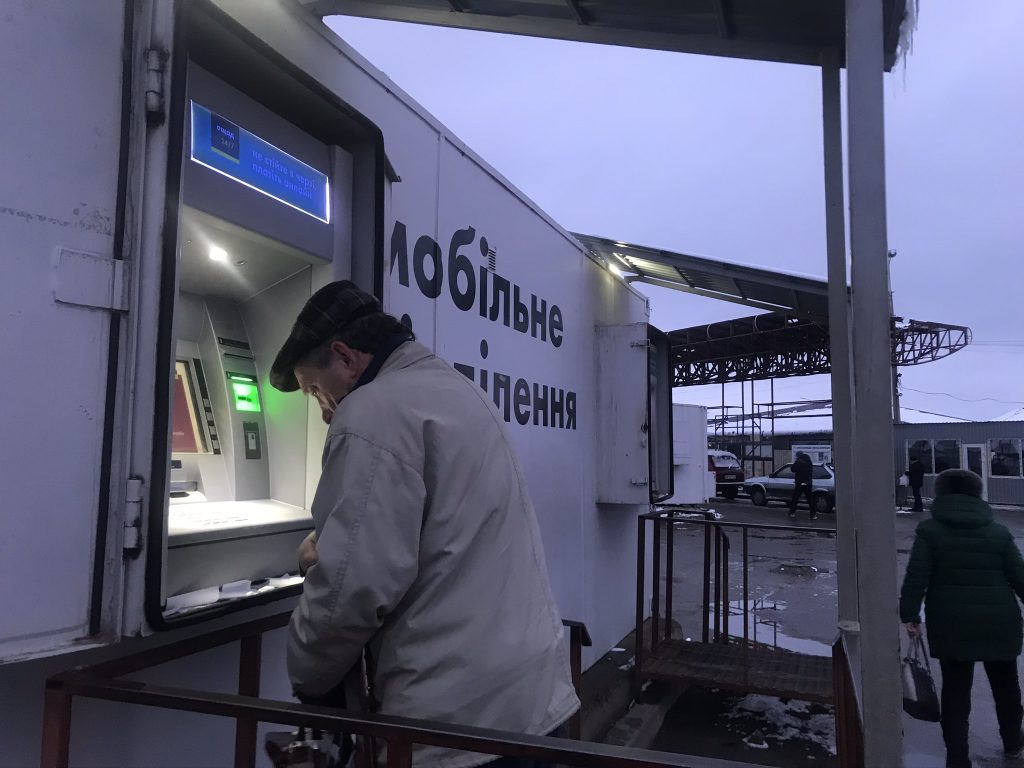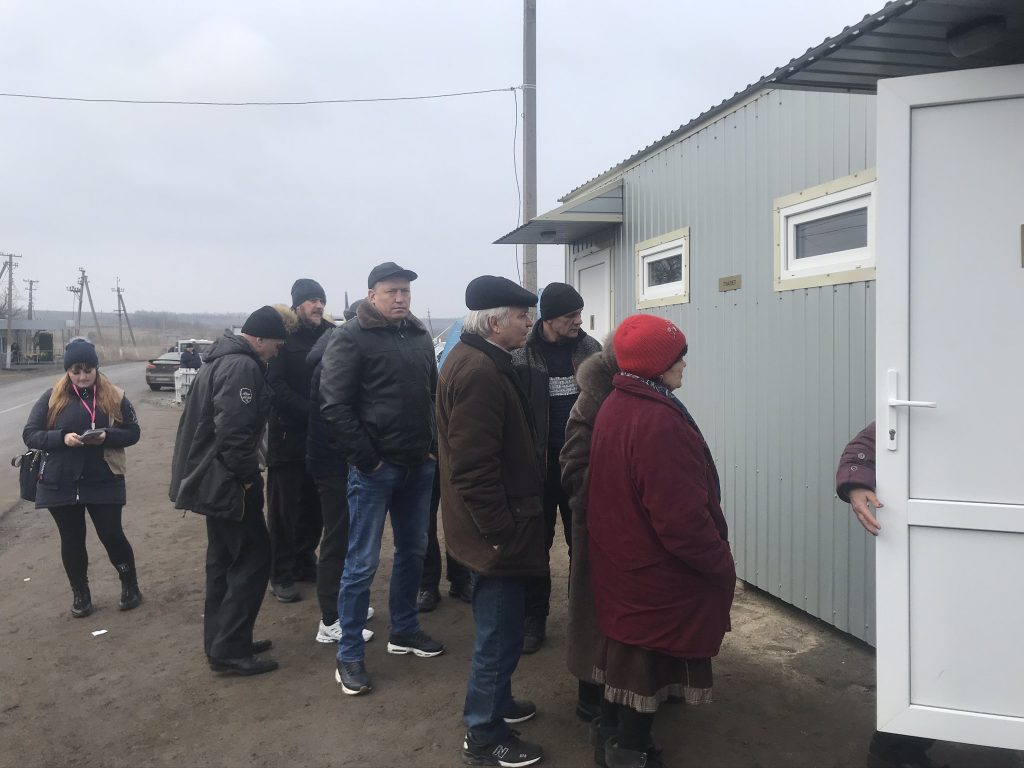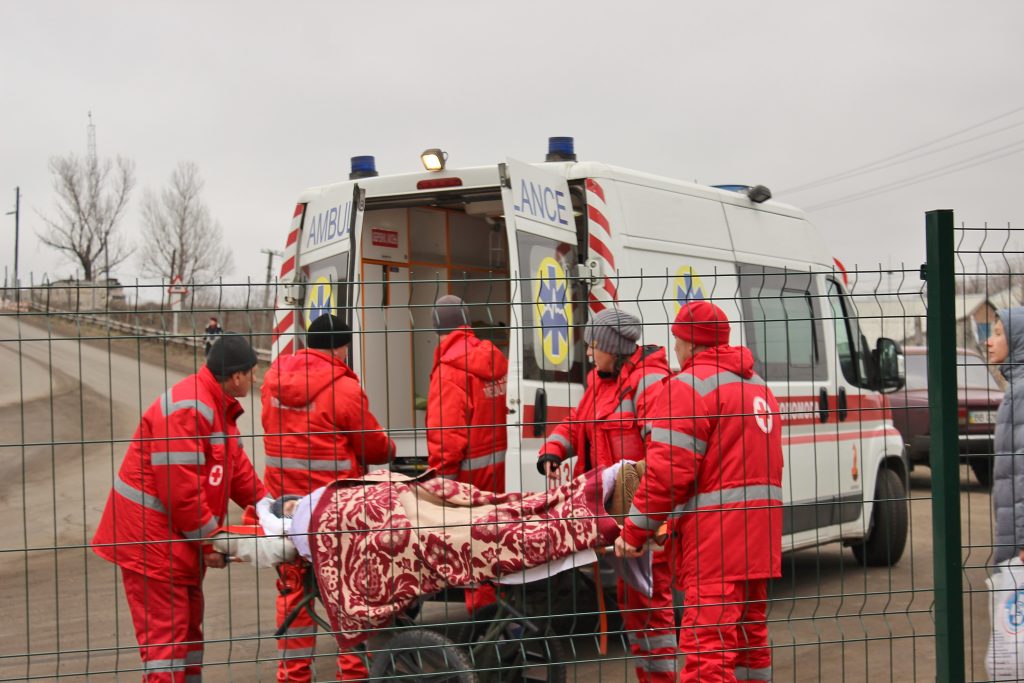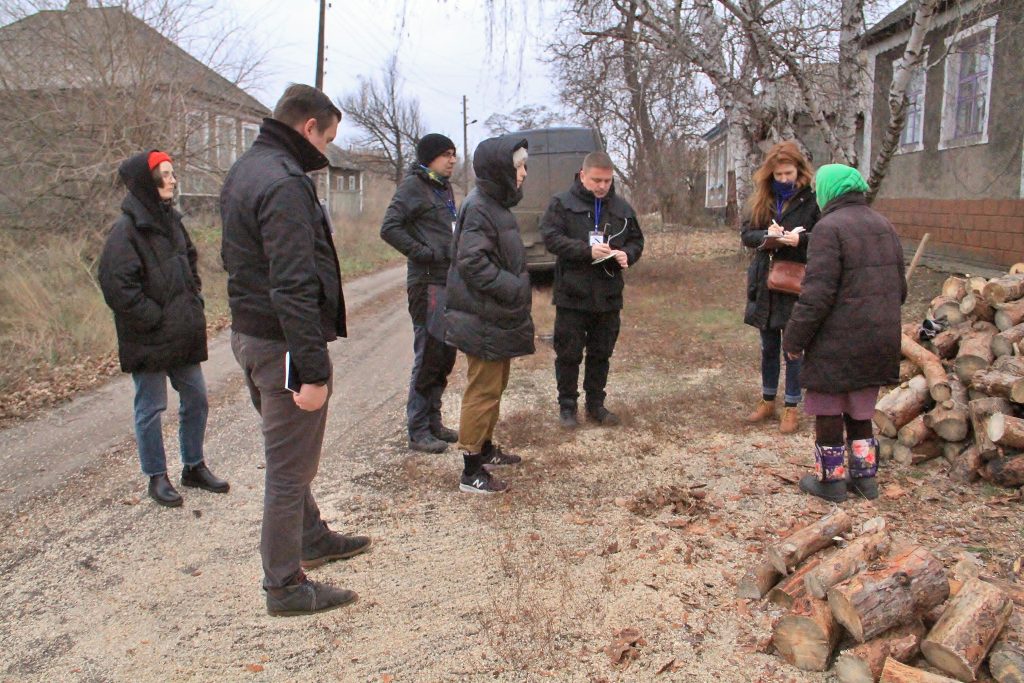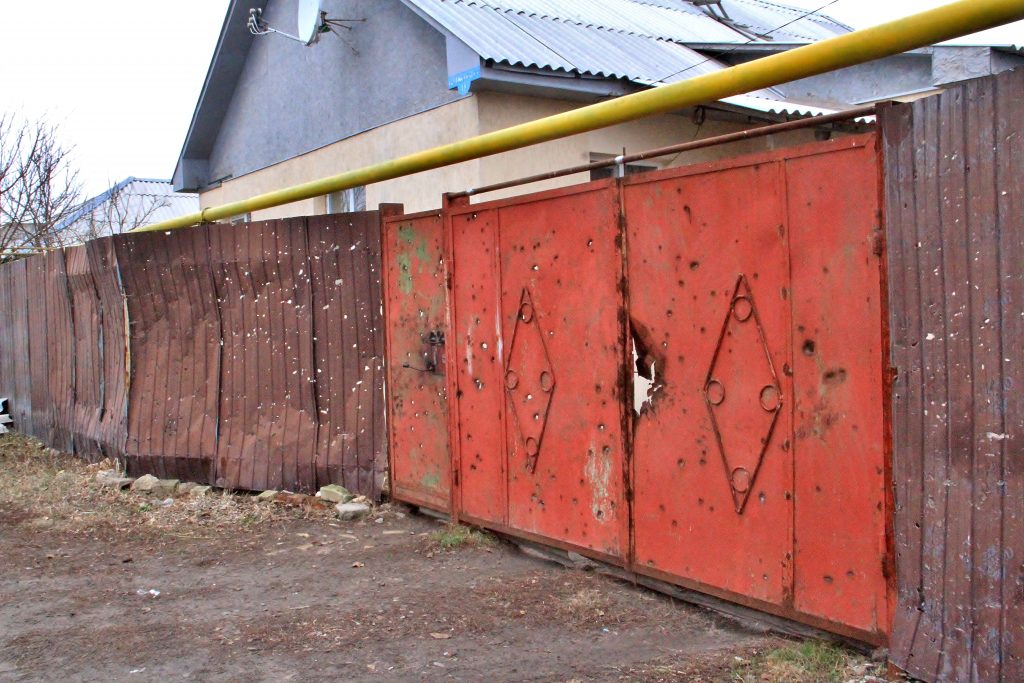Monitoring
Mission
Achievements
Projects
All projects about activities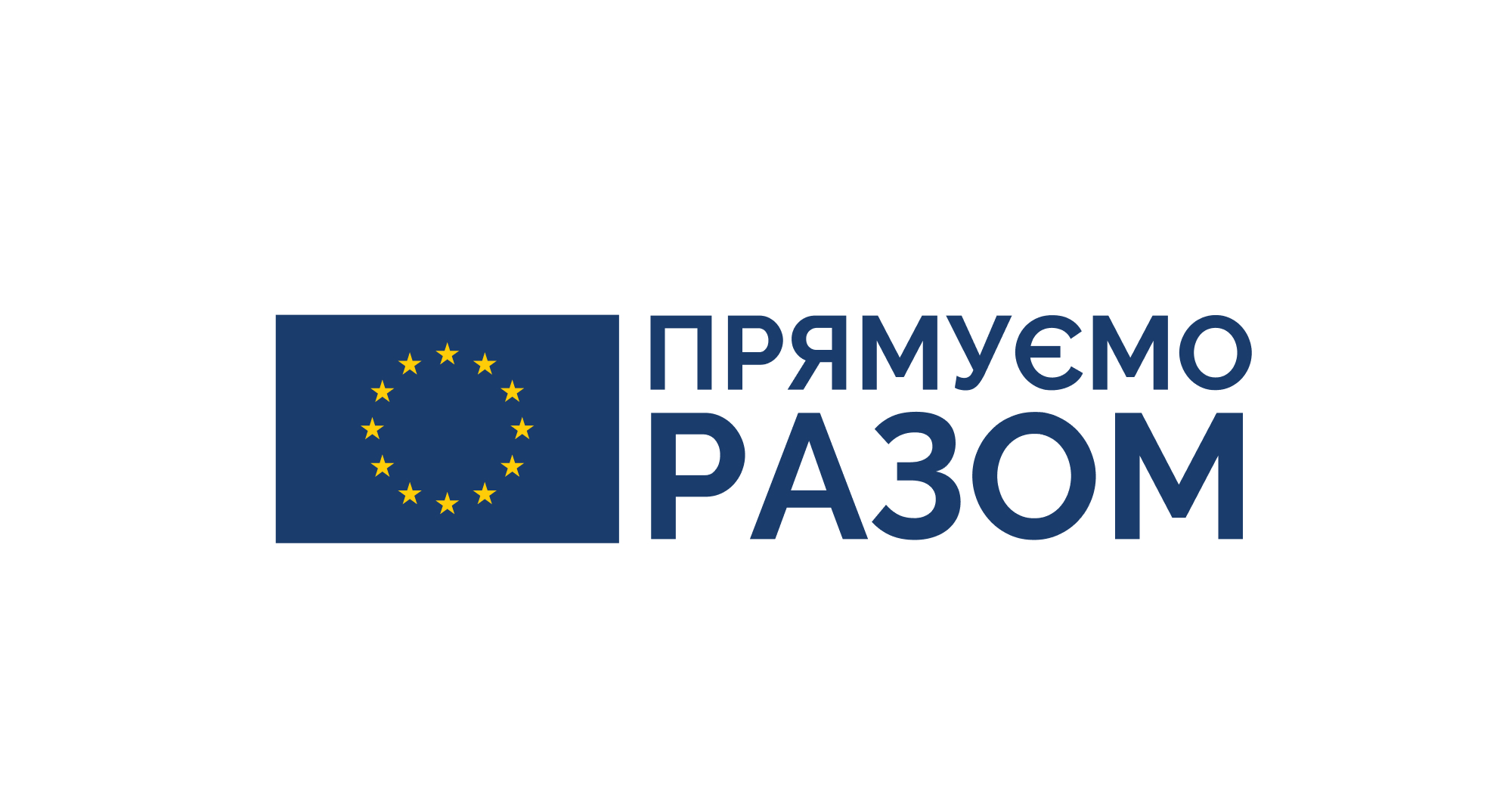
Support for War-Affected Vulnerable Groups and Residents of Remote Areas of Ukraine
Our Team
The Foundation’s monitoring missions involve visits to frontline and de-occupied territories to assess the actual needs of affected communities and develop recommendations for humanitarian response.
Our team compiles reports and submits them to ministry representatives, local authorities, deputies, international partners, embassies, and other stakeholders. Based on these findings, we also organize international advocacy trips.
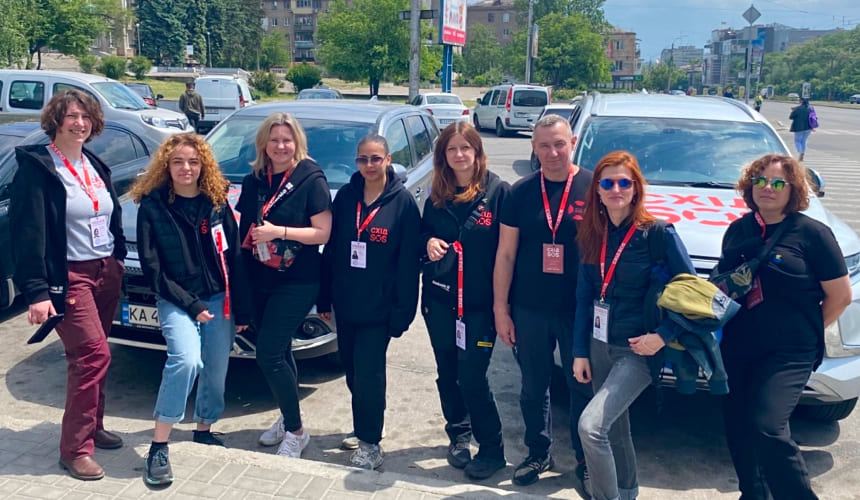
History
Since the war began, we have been monitoring conditions along the contact line. During field missions, our specialists have documented escalations, recorded testimonies, and assessed human rights conditions at checkpoints and in isolated settlements.
We monitored the situation in the conflict zone in eastern Ukraine. In collaboration with national and European human rights organizations, we conducted international missions to assess conditions in government-controlled areas of the Luhansk and Donetsk regions. Our focus included access to education, freedom of movement, the social and humanitarian situation, the work of local authorities and law enforcement, and the rights of internally displaced persons.
The missions aimed to prevent human rights violations, track changes in the situation, inform the international community, and provide recommendations to state and local authorities.
To enhance the pandemic response, we conducted monitoring visits to the Luhansk and Donetsk regions in January and March to identify key healthcare system needs and gaps, fostering collaboration between public, private, and civil society sectors.
With support from the German Federal Foreign Office and in partnership with the German NGO DRA, we carried out additional monitoring visits to these regions. Our team documented human rights violations in the temporarily occupied territories, assessed the humanitarian situation in frontline settlements, examined the causes of ceasefire violations, and analyzed challenges in local governance, public administration, and civil-military cooperation.
The monitoring team conducted visits to entry-exit checkpoints, frontline settlements, medical facilities, and government offices in the Luhansk region. We assessed the risks associated with the COVID-19 pandemic and inspected all observation sites in the region to evaluate their suitability for prolonged stays. Additionally, we documented the challenges faced by civilians crossing the contact line.
We carried out international monitoring visits to the Milove border crossing point and the entry-exit control points at Stanytsia Luhanska, Shchastia, Novotroitske, and Hnutove. The visits focused on identifying human rights violations, assessing humanitarian challenges, and analyzing the procedures involved in crossing these control points.
In May, we conducted an international monitoring mission to the Kyiv, Chernihiv, Sumy, and Zakarpattia regions. The mission involved representatives from Ukraine, Germany, France, and the Czech Republic, who documented crimes, infrastructure destruction, and assessed the situation of internally displaced persons (IDPs) and victims. The influx of people arriving in Zakarpattia highlighted the escalation of hostilities in the east during February and March. Based on the mission’s findings, we prepared an analytical report.
In June, we published a report on the aftermath of the Kakhovka dam explosion, which was caused by the occupiers. The Foundation’s team arrived at the scene in the immediate aftermath of the tragedy. The devastating consequences of this terrorist attack affected not only the Kherson and Mykolaiv regions but also extended to the Dnipropetrovsk and Zaporizhzhia regions. Our findings from the monitoring mission include a detailed description of the situation in the initial days following the disaster, its impact on the environment, and the economic consequences.
Additionally, we monitored the readiness of 220 educational institutions for the upcoming school year. In July and August 2023, we surveyed the administrations of educational institutions in the Zaporizhzhia, Mykolaiv, Kherson, Luhansk, and Kharkiv regions to assess their preparedness.
We presented the Chronicles of Evacuation photo exhibition, which highlighted the outcomes of our monitoring missions in frontline and de-occupied settlements. Additionally, we participated in panel discussions at the Donbas Media Forum: Global in Warsaw, where we shared recommendations for the restoration and reconstruction of the liberated villages in the Kherson, Mykolaiv, Donetsk, and Kharkiv regions.
In October, our team conducted an international monitoring trip, visiting 66 de-occupied settlements in the Kherson, Mykolaiv, Donetsk, and Kharkiv regions. The findings from this mission were compiled into a detailed report.
Our representatives visited France and Germany as part of an advocacy trip to present a report on the humanitarian needs of the de-occupied territories of Ukraine. During the trip, they focused on issues of accountability for collaboration with the occupying forces and the return of civilian prisoners who were illegally detained by russia.
In May, our team conducted an international monitoring mission to frontline communities to assess the situation and address the pressing needs in education and healthcare, as well as the integration challenges faced by those forcibly displaced by the full-scale war. The findings from this mission were used to create the report “De-occupied Territories of Ukraine: Findings of Visits to Educational Institutions” and to develop actionable recommendations for national and international aid providers.
We joined a study organized by the Ombudsman’s Office and conducted monitoring visits to educational centers that support applicants from temporarily occupied territories. The East SOS team visited 10 universities across Ukrainian cities and identified the key challenges people face during reintegration.
Additionally, we presented a report based on an international monitoring mission to frontline areas of the Zaporizhzhia, Donetsk, and Kharkiv regions. The report outlines the security situation, evacuation and accommodation processes, individual and institutional adaptation strategies, issues with restoring destroyed housing, and the relocation of temporarily displaced communities and institutions.
The monitoring reports compiled by our team after visiting de-occupied territories offer valuable insights for everyone communicating publicly about Ukraine and Ukrainians. We identify urgent needs and develop recommendations. These findings are crucial for accurate media coverage, especially as post-liberation euphoria gives way to the reality of long-term recovery. There are people still living in destroyed villages—people whose stories deserve attention and documentation.
Oksana Kuiantseva, Board Member, PR and Communications Coordinator
